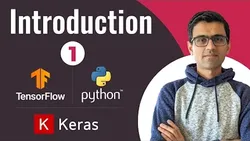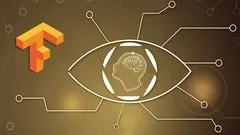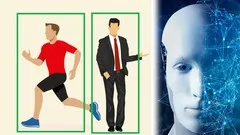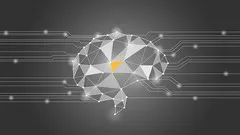
Build a Deep Audio Classifier with Python and Tensorflow 
This course teaches participants how to build a deep audio classifier using Python and Tensorflow. It begins with the installation and import of dependencies, followed by the creation of a Tensorflow dataset and the determination of average call length. Participants then build a preprocessing pipeline and a deep learning model, and finally train and evaluate the model. By the end of the course, participants will have a fully functioning deep audio classifier. ▼
ADVERTISEMENT
Course Feature
![]() Cost:
Cost:
Free
![]() Provider:
Provider:
Youtube
![]() Certificate:
Certificate:
Paid Certification
![]() Language:
Language:
English
![]() Start Date:
Start Date:
On-Demand
Course Overview
❗The content presented here is sourced directly from Youtube platform. For comprehensive course details, including enrollment information, simply click on the 'Go to class' link on our website.
Updated in [February 21st, 2023]
- START
- CLIENT CALL 1
- Breakdown Board
- MISSION 1
- Install and Import Dependencies
- Build a Dataloading Function
- MISSION 2
- Create Tensorflow Dataset
- Determine Average Call Length
- Build Preprocessing Function
- MISSION 3
- Create Training and Testing Partitions
- Build Deep CNN Model
- Classifier Audio Clips
- MISSION 4
- Build Forest Parsing Function
- Predict All Files
- MISSION 5
- Export Results to CSV
(Please note that we obtained the following content based on information that users may want to know, such as skills, applicable scenarios, future development, etc., combined with AI tools, and have been manually reviewed)
This course provides an overview of how to build a deep audio classifier with Python and Tensorflow. Participants will learn how to install and import dependencies, build a dataloading function, create a Tensorflow dataset, determine average call length, build a preprocessing function, create training and testing partitions, build a deep CNN model, classify audio clips, build a forest parsing function, predict all files, and export results to a CSV.
[Applications]
After completing this course, participants can apply their knowledge to build a deep audio classifier with Python and Tensorflow. They can use the skills they have learned to create a Tensorflow dataset, build a preprocessing function, create training and testing partitions, build a deep CNN model, classify audio clips, build a forest parsing function, predict all files, and export results to a CSV.
[Career Paths]
1. Machine Learning Engineer: Machine learning engineers are responsible for developing and deploying machine learning models. They use a variety of tools and techniques to build, train, and deploy models that can be used to solve real-world problems. The development of deep learning models has been a major focus in recent years, and machine learning engineers are expected to have a strong understanding of deep learning algorithms and techniques.
2. Data Scientist: Data scientists are responsible for analyzing large datasets and extracting meaningful insights from them. They use a variety of tools and techniques to explore and analyze data, and develop models that can be used to make predictions and decisions. Data scientists are expected to have a strong understanding of machine learning algorithms and techniques, as well as the ability to interpret and communicate the results of their analyses.
3. Artificial Intelligence Engineer: Artificial intelligence engineers are responsible for developing and deploying AI-based systems. They use a variety of tools and techniques to build, train, and deploy AI-based systems that can be used to solve real-world problems. AI engineers are expected to have a strong understanding of deep learning algorithms and techniques, as well as the ability to interpret and communicate the results of their analyses.
4. Natural Language Processing Engineer: Natural language processing engineers are responsible for developing and deploying natural language processing (NLP) systems. They use a variety of tools and techniques to build, train, and deploy NLP-based systems that can be used to solve real-world problems. NLP engineers are expected to have a strong understanding of deep learning algorithms and techniques, as well as the ability to interpret and communicate the results of their analyses.
[Education Paths]
1. Bachelor of Science in Computer Science: This degree path focuses on the fundamentals of computer science, such as programming, algorithms, data structures, and software engineering. It also covers topics such as artificial intelligence, machine learning, and natural language processing. This degree path is becoming increasingly popular as the demand for skilled computer scientists continues to grow.
2. Master of Science in Artificial Intelligence: This degree path focuses on the development of intelligent systems and their applications. It covers topics such as machine learning, deep learning, natural language processing, and computer vision. This degree path is becoming increasingly popular as the demand for AI-based solutions continues to grow.
3. Doctor of Philosophy in Machine Learning: This degree path focuses on the development of advanced machine learning algorithms and their applications. It covers topics such as deep learning, reinforcement learning, natural language processing, and computer vision. This degree path is becoming increasingly popular as the demand for AI-based solutions continues to grow.
4. Master of Science in Data Science: This degree path focuses on the development of data-driven solutions and their applications. It covers topics such as data mining, data visualization, machine learning, and natural language processing. This degree path is becoming increasingly popular as the demand for data-driven solutions continues to grow.
Course Provider

Provider Youtube's Stats at AZClass
Discussion and Reviews
0.0 (Based on 0 reviews)
Explore Similar Online Courses

Nevada Real Estate Salesperson Exam: Study Guide & Practice

Build Real-World Python Microservices with Continuous Delivery From Zero

Deep Learning With Tensorflow 20 Keras and Python

Tensorflow on Googles Cloud Platform for Data Engineers

Deep Learning and Reinforcement Learning with Tensorflow

Tensorflow Deep Learning - Data Science in Python

Neural Networks with Tensorflow

TensorFlow Hub: Deep Learning Computer Vision and NLP

LEARNING PATH: TensorFlow: Computer Vision with TensorFlow

Hands-On Transfer Learning with TensorFlow 20

Human Tracking & Counting using TensorFlow & Deep Learning


Start your review of Build a Deep Audio Classifier with Python and Tensorflow